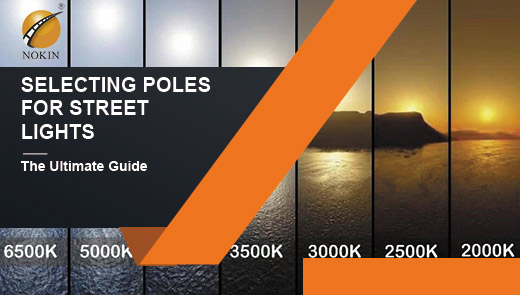Solar Street Lights: Key Advantages and Disadvantages You Must Know!
Solar LED street lights use LEDs as the light source; the solar panels charge the rechargeable batteries during the day, and the batteries power the LEDs at night. Solar panels mounted on the lighting structure form an integrated solar LED street light (also called a one-piece solar street light), while solar panels mounted on the light pole form a split solar LED street light. Nowadays, Solar street lights are being widely used because of their many advantages. However, before deciding whether or not to adopt solar powered street lights, it is crucial to have a comprehensive understanding of their advantages and disadvantages.

Advantages of Solar Street Lights
Energy efficient and environmentally friendly
Global warming is a serious issue, and carbon footprint is a major contributing factor. People are increasingly realizing that the use of green energy can help reduce their carbon footprint. Eco-friendly green energy is being promoted all over the world to protect the planet. As we all know, non-renewable energy sources such as coal, natural gas, and oil will be exhausted one day. Solar LED street lights, on the other hand, do not require any fuel and run entirely on solar energy. Solar energy is inexhaustible, making it an ideal green lighting option that can effectively reduce carbon emissions.
Remarkable cost-effectiveness
In terms of capital investment as well as operation and maintenance costs, solar street lights are a better investment option. As Solar powered LED street lights are powered by renewable energy, there is no need to pay monthly electricity bills. Moreover, there is no ongoing investment required for their installation, as the streetlights are wireless and not connected to the grid; there are no trench digging and cable connection costs. In the long run, the overall cost advantage of solar street lights is significant.
Low maintenance costs
Each solar street light relies on solar power, eliminating the need to pay for electricity. Moreover, the charge controller of the solar street light automatically manages the light intensity, eliminating the need to replace individual streetlights and keeping maintenance costs low. Once the installation is complete, there is also basically no need for manual intervention, which can save a lot of maintenance costs. In addition, solar LED streetlights can be illuminated all night long, regardless of weather conditions or power outages.
Easy Installation, No Electrical Utilities Required
The installation process of traditional commercial electric lighting projects is cumbersome, requiring cable laying, digging, laying cable ducts, threading cables inside the ducts, and disposing of trench waste, each of which requires a large amount of manpower and equipment investment. Moreover, equipment such as transformers, distribution cabinets, and switchboards is expensive.
On the other hand, the installation of solar powered street lights with LED does not require electrical connections, and each solar lighting system is independent. Therefore, there are no costs associated with cable laying, trench digging, etc. All that is required before installation is a sturdy base and a pit for the batteries. Overall, the installation process is very simple and easy.
No risk of cable theft, no expensive cable costs
In remote areas, cable theft is a common problem, and the cost of transporting materials and laying cables is high. Solar lighting systems avoid these problems associated with traditional street lighting. Since each unit is independent and not connected by cables, there is no chance of cable theft. Even if one solar module is stolen, it will not affect the operation of the other units in the system.
Safe and Durable
Traditional streetlights can be a potential safety hazard due to aging materials, poor construction quality, and power supply issues. Solar LED streetlights do not use alternating current (AC) and do not suffer from these defects. Solar LED streetlights can last up to 25 years or even longer, providing long-term stability for lighting.
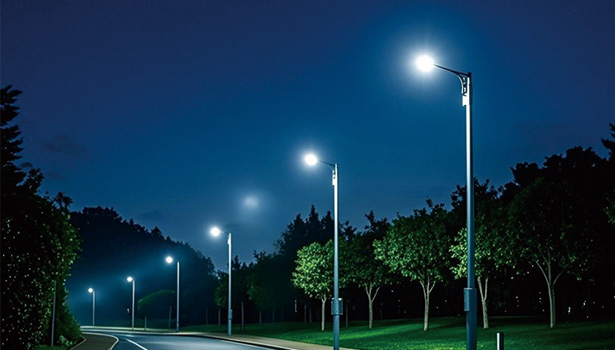
Disadvantages of Solar Street Lights
Large initial investment
A significant disadvantage of solar powered street lights with LED is the high initial investment cost. According to a survey, the total investment for installing a solar LED streetlight is three times that of a traditional streetlight with the same efficiency. Although the actual investment cost is lower in the long run, considering the cost of electricity, maintenance, and functionality, as well as the longer lifespan of Solar street lights, the higher initial investment still makes many people hesitant.
More expensive than traditional streetlights
The higher upfront cost of solar powered street lights compared to traditional streetlights makes many people hesitant to invest. However, they fail to realize that in the long run, solar street lights have significant advantages in terms of electricity costs, maintenance, and their longer lifecycle, and the overall cost is actually lower.
Battery life issues
In most cases, batteries may not be fully charged for a year or even half a year. The charging efficiency of some batteries may be reduced by as much as 50%, which will seriously affect the lighting effect on rainy nights. Therefore, it is crucial to use high-quality lithium batteries when installing solar street lights.
Risk of theft
Since solar street lights have no wiring, they are at a higher risk of theft than traditional streetlights. Moreover, Solar street lights cost more, and the value of the lamps and panels is greater, making them an easier target for theft.
Regular Inspection Required in Extreme Weather Conditions
Solar panels may not operate efficiently in adverse weather conditions, resulting in lower energy output. Solar systems placed horizontally may accumulate moisture, dust, and snow, reducing their effectiveness. While it is recommended that users set their solar panels at an angle to prevent excessive water buildup, the panels and other components of your solar LED street light need to be inspected regularly to extend the life of your system.
Battery Replacement
Compared to traditional batteries, the new lithium batteries used in solar energy systems offer high durability. However, rechargeable batteries can still run out of power over time and may need to be replaced several times over the life of the solar street light. Battery replacement costs must be considered when calculating the total investment for commercial solar street lights.
Selection of Solar Charge Controller
The quality of solar street light controllers on the market varies. Although the controller accounts for a small percentage of the total expenditure, it is a key component of the system. Therefore, there are some risks involved in choosing the right solar street light controller.
First of all, the controller should have perfect protection functions, such as battery charging over-voltage protection, battery discharge under-voltage protection, battery and solar panel reverse connection protection, LED output short-circuit protection, preventing nighttime battery discharge protection to the solar panel, lightning protection, and other protection functions.
Secondly, the higher the charging efficiency and the efficiency of constant current drive LED lights, the better. High charging efficiency can save solar panels, and the high efficiency of constant-current drive LED lights can save battery power, so that the overall realization of more energy-saving, environmental protection, and low cost.
Finally, it is best to use a controller with two independent control functions so that it is easy to adjust the power of the whole light. At night when pedestrians are scarce, one or both lighting circuits can be automatically shut down to save power, and the power of the LED lights can be adjusted.
Low conversion efficiency
The conversion power density of solar panels is generally between 15% and 19%, and the conversion efficiency of silicon-based solar panels can reach up to 25%. However, the efficiency of solar street lights can be affected by the surrounding buildings, resulting in actual conversion efficiencies that may be lower.
Limited by geography and weather conditions
Since solar energy comes from the sun, geographic and meteorological factors can directly affect the lighting status of commercial solar LED street lights. Continuous cloudy and rainy weather can affect their performance, resulting in lights that do not meet global standards and may not even be able to light up.
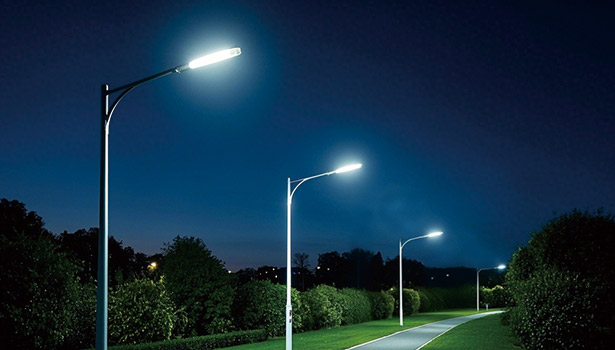
Comparative Analysis of Solar Street Lights and Traditional Street Lights
Energy Efficiency
Solar street lights run on renewable solar energy, which is both free and plentiful. During the day, solar panels absorb sunlight and store the converted electricity in batteries for use at night. This not only reduces the cost of electricity but also makes it completely independent of the grid. Solar lighting is particularly efficient in sunny areas, providing continuous lighting without the need for an external power source.
Conventional street lights rely on grid power, which is often generated from fossil fuels such as coal, natural gas, or nuclear energy. This reliance results in higher electricity costs and can cause environmental pollution. Without proper energy management, conventional streetlights can also waste electricity, increasing overall costs.
Environmental Impact
Solar street lights have a minimal environmental impact because they do not burn fossil fuels or emit greenhouse gases. By reducing reliance on grid electricity, they help to reduce carbon emissions and support sustainable development goals. Paired with energy-efficient LED bulbs, Solar led street lights further reduce overall power consumption.
Traditional streetlights, especially older models that use incandescent or metal halide lamps, consume more energy and are more polluting to the environment. The process of generating electricity for these streetlights usually involves burning fossil fuels, which increases carbon emissions. Conventional streetlights are much less energy efficient and place a heavier burden on the environment than solar-powered LED street lights.
Installation and Infrastructure
One of the biggest advantages of solar led street lights is the ease of installation. With no wiring or connection to the grid required, they can be quickly deployed in remote areas or where there is no existing electrical infrastructure. This not only speeds up the installation process but also reduces installation costs.
Installing traditional streetlights is more complex and costly. Wires need to be laid, poles connected to the grid, and, in many cases, roads or sidewalks need to be dug up to run the cables. Any modifications or repairs to the system can further increase the cost and time required for maintenance.
Cost Comparison
Solar powered street lights have a higher upfront cost due to the need for solar panels, batteries, and advanced controllers. However, in the long run, they are cost-effective through savings on electricity bills and lower maintenance costs. With minimal maintenance requirements, Solar street lights are a cost-effective investment over the long term.
The initial cost of conventional streetlights is usually lower than that of Solar street lights. However, they have ongoing costs, including electricity and frequent maintenance costs. Over time, these costs can add up, making conventional lighting more expensive in the long run.
Reliability and Performance
Solar powered outdoor street lights rely on sunlight, so their performance can be affected by weather conditions. In areas that are often cloudy or rainy, they may not charge efficiently. However, advances in battery storage technology have made modern Solar street lights increasingly reliable, as they are able to store enough power to keep them lit for several days.
Traditional streetlights are powered by the grid and provide continuous lighting regardless of the weather. However, they are vulnerable to power outages. In the event of a grid failure, an entire area can be plunged into darkness, whereas Solar street lights can operate independently.
Maintenance
Solar powered led street lights require minimal maintenance. With no external wiring and few moving parts, the main components (LED bulbs and batteries) can last for years before needing to be replaced. Most LED bulbs have a life expectancy of over 50,000 hours, and batteries typically last 5-7 years before needing to be replaced.
Traditional streetlights require more frequent maintenance due to wiring, transformers, and electrical connections. Bulbs need to be replaced more frequently, and any damage to underground wiring can be expensive and time-consuming to repair. These factors increase the long-term cost of maintaining traditional streetlights.
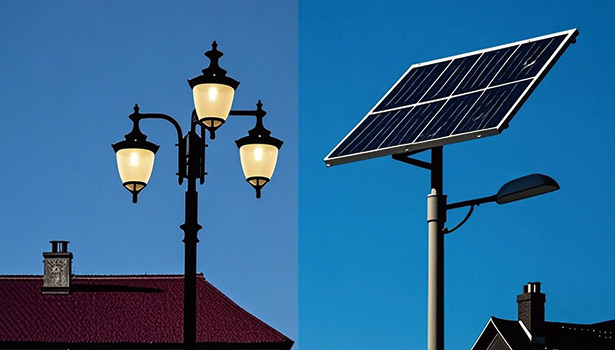
Is it Worth it to Buy a Solar Street Light?
From a long-term cost perspective
Despite the large upfront investment in Solar street lights, they can save a significant amount of money on electricity bills during operation. Take a medium-sized community as an example. If 100 traditional streetlights are installed, assuming that the power of each streetlight is 100 watts, the lights are on for 10 hours a day, the cost of electricity is 0.6 yuan per kilowatt-hour, and the expenditure on electricity is about 21,900 yuan a year (100 × 0.1 × 10 × 365 × 0.6). While using solar street lights, this part of the electricity cost can be completely saved. Moreover, the maintenance cost of solar street lights is low, and in the long run, the saved electricity and maintenance cost can make up for the higher investment cost in the early stage, realizing considerable cost savings.
Potential value brought by environmental benefits
At a time when environmental awareness is growing, investing in Solar street lights helps companies or communities establish a good environmental image. For companies, this may bring about an increase in brand value and attract more environmentally conscious consumers. For example, some green enterprises use solar street lights in their factories, and their environmental initiatives can become the highlight of their publicity and enhance their market competitiveness. For communities, green lighting can enhance the quality of life of residents, improve the overall image of the community, and may even increase property values to a certain extent. This potential value due to environmental benefits is difficult to measure with specific figures, but it is significant in the long-term development.
Investment Advantages of Applicable Scenarios
In some remote areas or places with imperfect power infrastructure, laying the grid is costly, while solar powered led street lights are easy to install and do not need to rely on the grid. At this time, investing in solar street lights can not only quickly solve the lighting problem but also avoid the high cost of laying the power grid. For example, in some mountain villages, if traditional streetlights are used, a lot of money needs to be spent on grid extension and maintenance, while Solar street lights can be installed and used directly, greatly reducing the cost of lighting system construction. In these specific scenarios, the investment advantages of Solar street lights are extremely obvious.
Investment Decision under Risk Consideration
Of course, investment in solar street lights also needs to consider the risks associated with their disadvantages. For example, in areas with insufficient light, the performance of solar street lights is affected and may not be able to meet the lighting demand, which requires additional energy supplementation programs, increasing the cost and management difficulties. In addition, there is a risk of theft of solar street lights, and security measures need to be strengthened. Investors should comprehensively assess factors such as geography, climate conditions, and security conditions in their region to weigh the risks and benefits of investment. If these risks can be effectively addressed, solar street lights are still a worthwhile lighting solution in the long term.
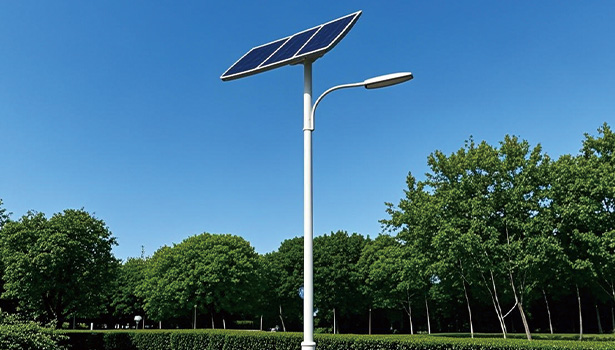
Solar street lights have many advantages, such as energy saving, environmental protection, low maintenance costs, and easy installation, making them a very cost-effective lighting solution in sunny areas in the long run. However, its disadvantages, such as high initial investment and limitation by geographical and weather conditions, should not be ignored. When choosing the type of street light, if the area is full of sunshine and the pursuit of long-term cost savings and environmental benefits, Solar powered led street lights are a good choice; if you need high-intensity lighting or if the area is often cloudy or rainy, traditional streetlights may be more suitable. We hope that the comprehensive analysis of the advantages and disadvantages of solar street lights can help you make informed decisions on the choice of lighting solutions.

